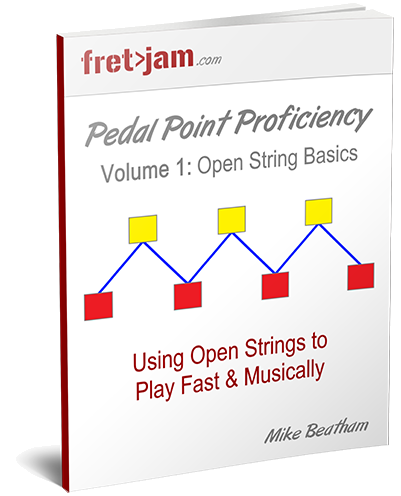Pedal Point Basics
Pedal point is a technique that involves movements of notes around a stationary or re-articulated note, often called the pedal note or pedal tone.

You'll hear pedal point used in both a lead and rhythm context. For example...
Lead Example
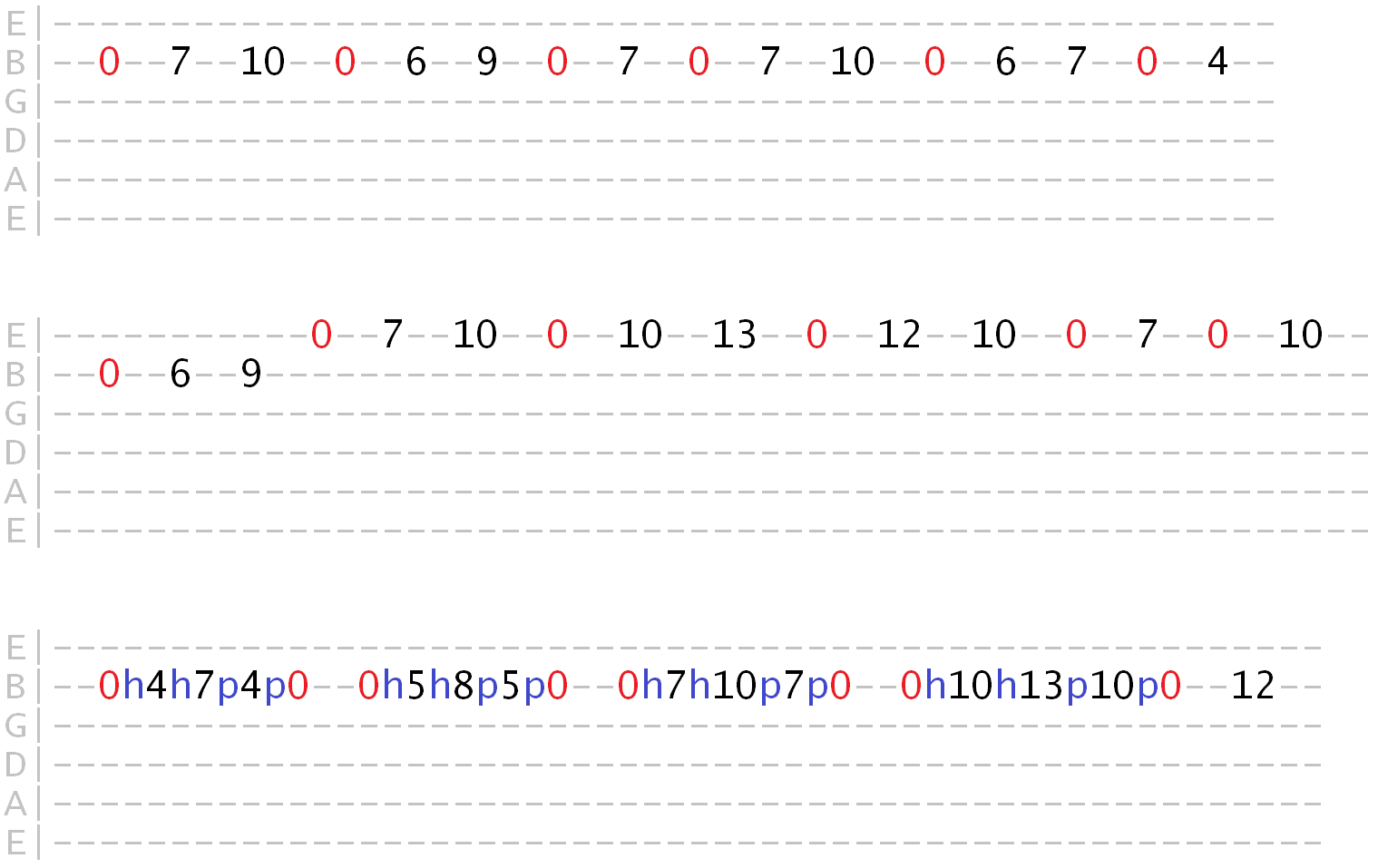
Rhythm Example
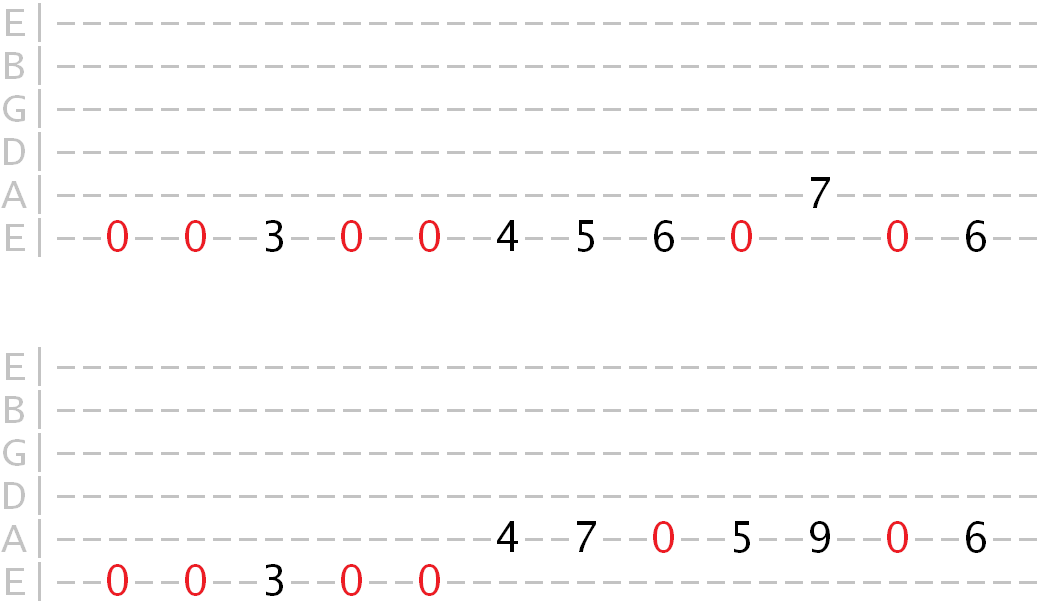
Famous examples of pedal point can be heard in the opening to AC/DC's Thunderstruck and Metallica's Master of Puppets...
You'll notice that Angus Young doesn't even need to use his pick hand to execute the pedal point lick! This can be thought of as a kind of "one hand tapping" and highlights the versatility of the pedal point technique. We'll look more at legato (hammer-ons / pull-offs) another time.
So as you can see and hear, we use the pedal tone as the base of the lick or riff, and interject it with movements above it. This gives the lick or riff a driving momentum suitable for quicker tempos.
Open String Pedal Tones
On guitar, the pedal tone tends to be an open string and, in a lead context, typically a note that corresponds to the root, 3rd or 5th of the chord we're playing over.
For example, over a G chord, whether major, minor or a power chord, the open G string would be our root pedal note.
If it was G major, the open B string would be our major 3rd pedal note.
The open D string would be the 5th of the chord.
Or, if we were playing over E minor, the open E would be our root pedal note.
The open G would be our minor 3rd pedal note.
The open B would be our 5th.
So it's useful to first practice identifying the root, 3rd and 5th of the chord you're playing over. If that note is provided by any of the open strings, you'll have a strong pedal note to build your licks around.
I have a chord table to help you learn which open strings work for which chords in the book.
But remember that all the examples in this lesson can technically be played on any string, as we practice getting physically comfortable with the technique.
Timing Basics
We need to be confident with timing our pedal point licks accurately and cleanly. A metronome will come in handy for this. There are many free metronome apps available if you don't have a stand alone one.
To start with, I've set the metronome to 60 beats per minute. It's important to start slow and build up your speed gradually (I recommend increments of 5 BPM). You can always change the BPM if it feels too slow or fast.
Pedal point riffs and licks are usually played using 8th or 16th notes. If you're not familiar with these terms, I have basic timing lessons on this site. But let's quickly recap...
8th Notes
8th notes would involve dividing up 4 beats/clicks, or a measure, with 8 picked notes...

16th Notes
16th notes would involve dividing up the measure with 16 picked notes...

So 16th notes will be more challenging to play as you reach higher tempos, as we're picking more notes in between each beat.
Let's start nice and steady with 8th notes.
Make sure you can alternate pick the open strings, down up down up etc. in time with the clicks.
Basic Pedal Point Exercises
So, that's our pedal tone. Now we're going to add some melodic movement around it. The notes you add will depend on the key and scale you're playing in. In this example I'm gonna use minor pentatonic along the G/3rd string as a guide.

The open 1 will be our pedal tone for these examples - the root of the scale.
Keep it simple to start with. Here I'm adding a note to the 1st and 3rd beats of each measure, with the pedal note filling the gaps in between...


By using increments of 5 BPM, we can gradually build up to a decent tempo...
However, you might want to develop your licks a bit more before you focus on speed.
Let's now try changing the notes each time that 1st and 3rd beat come around. Again, I'm going to use the minor pentatonic scale as a guide for this.

Slow
Faster
Keep going with it and see where your fingers take you!
Now let's try adding our non-pedal notes on the 2nd and 4th beats...

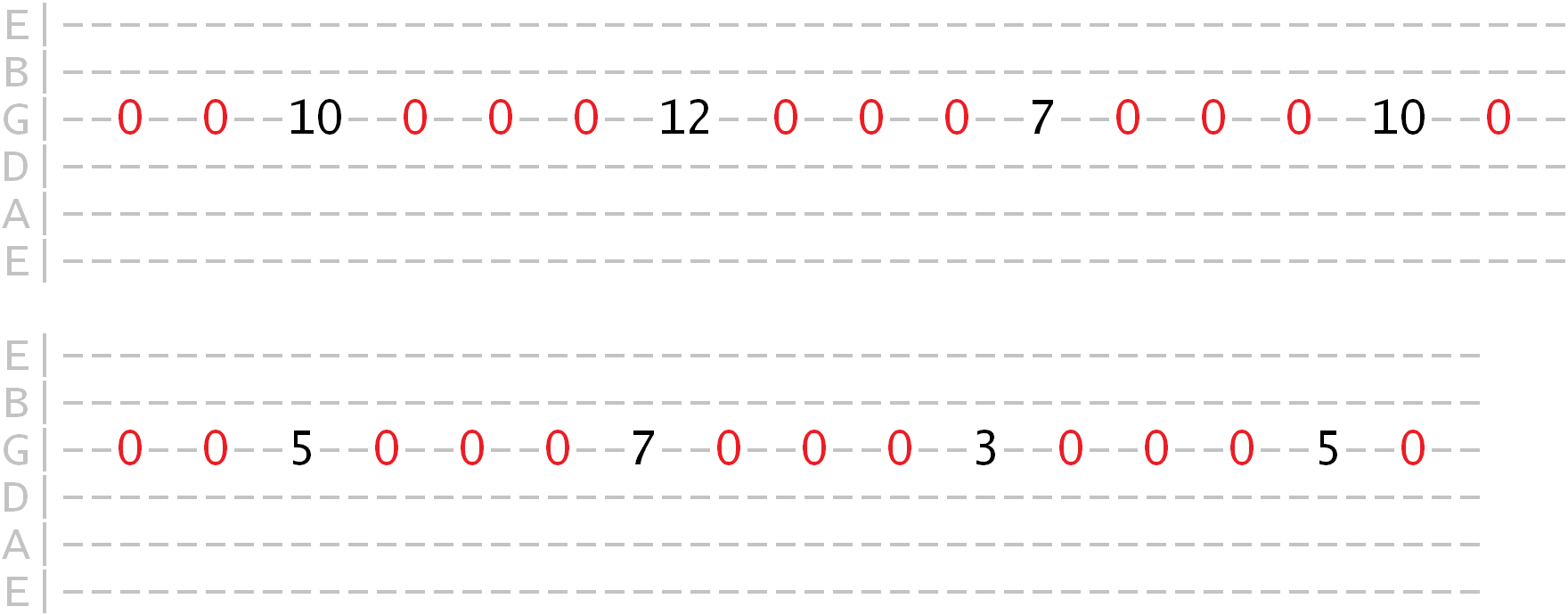
Slow
Faster
We can also place non-pedal notes in between the beats. This is a bit more challenging, but all we're doing is shifting the same pattern of notes as before along the measure by one 8th note...


Slow
Faster
While what we've been playing up to now isn't exactly thrilling, this process of timing different notes around a pedal note is designed to awaken and calibrate a specific part of your brain.
Let's make things a little more... challenging!
Here I've mapped out a scale called Phrygian Dominant on the 2nd string...

Before, we were playing single non-pedal notes evenly spaced across the measure. This time, we're gonna try some consecutive non-pedal notes. Starting with two at a time...


Slow
Faster
Going back to single notes, we could play a strict alternation between the pedal and non-pedal note...


Slow
Faster
While it's common to use just one of these timings in a single lick, we can create something more dynamic by combining them.
Take a look and listen to this example...

Slow
Faster
And of course, these timings can be applied to any scale and any string. To supplement this lesson, I've provided a selection of 48 exercises covering several scales.
Going back to using consecutive notes, we could also use three consecutive non-pedal notes, meaning the pedal note is more sparse across the measures. For this example I'm using a scale called Mixolydian across the 1st string...

First I'm going to isolate one three-note position within that scale to play with the pedal note...

Next, work out a fingering sequence and repeat that 3 note sequence. For example...

Once you're comfortable with that, try moving between two positions in the scale, using the same fingering sequence each time...

Slow
Faster
You could add in a third and more positions if you like.
This is one effective way to create licks in general - establish a fingering sequence and then repeat that sequence moving through different positions in the scale. The only difference here is we're using a pedal note to fill in the gaps, which gives it more of a staggered feel.
With all these examples, we can take our sequences beyond the 12th fret. Since the 12th fret marks the octave of the open string, we simply repeat the scale pattern from the 12th fret, such as this Dorian example.
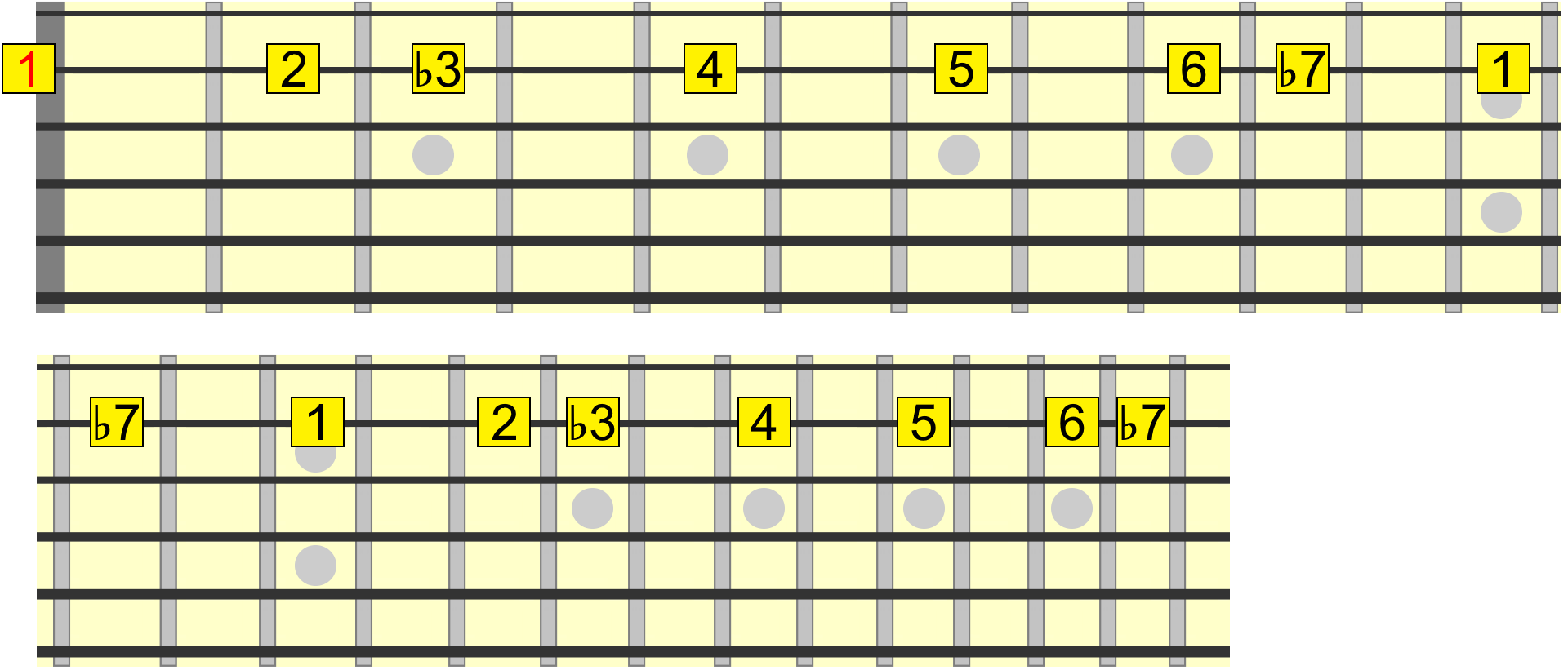

Slow
Faster
Triplets
Triplets are another way of timing your notes within a measure.
Before we were dividing the measure into 8 evenly spaced notes. With triplets, we divide it into 12 notes. So that gives us 3 notes per beat instead of 2. Let's take a listen just playing an open string pedal note...

Confusingly, this timing is referred to as 8th note triplets, even though there are 12 notes in the measure. But the most important thing is that you train your ear, pick hand and fret hand to this timing.
Once you can alternate pick the open string in triplets, we can use a similar process to before, building up our pedal point licks in stages.
A couple of examples...
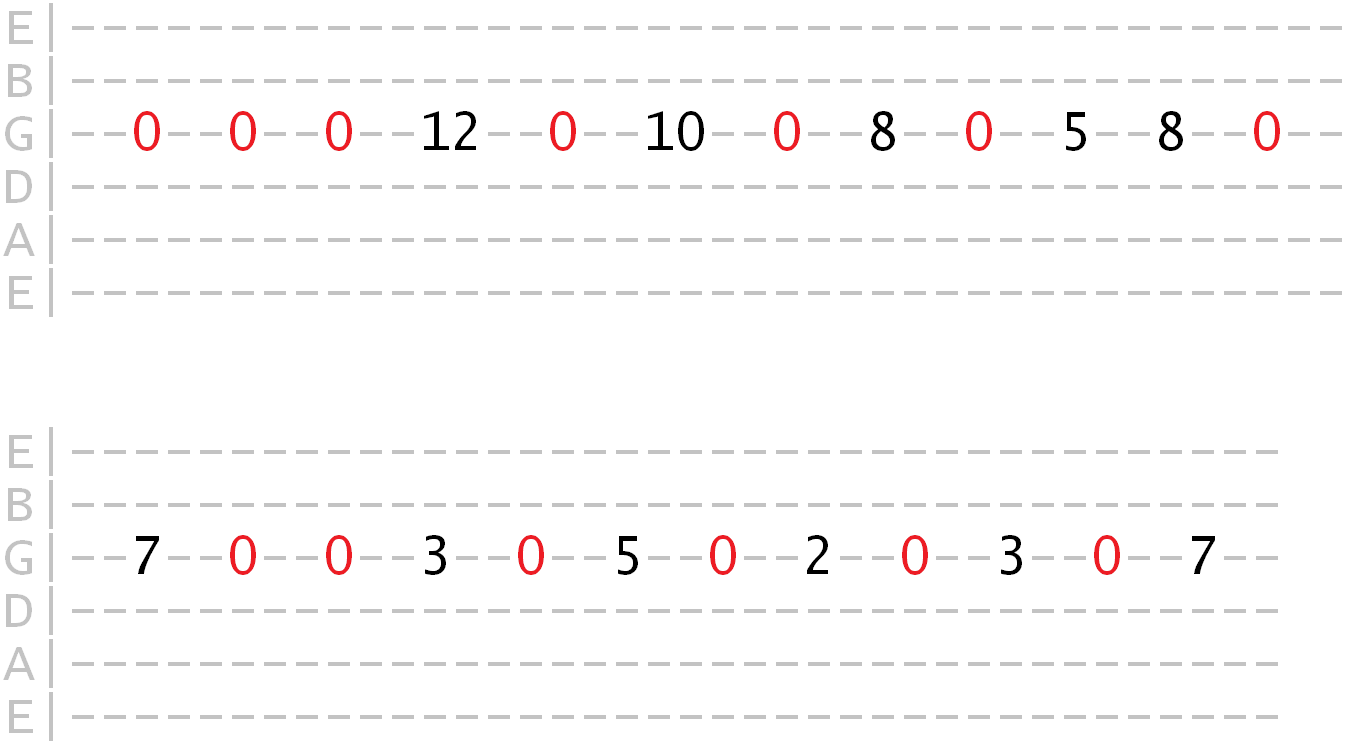
Slow
Faster

Slow
Faster
For the complete volume, including exercises across more scales and backing tracks, you can make a donation of your chosen amount to receive my book Pedal Point Proficiency: Volume 1. Thank you for your time and support!
